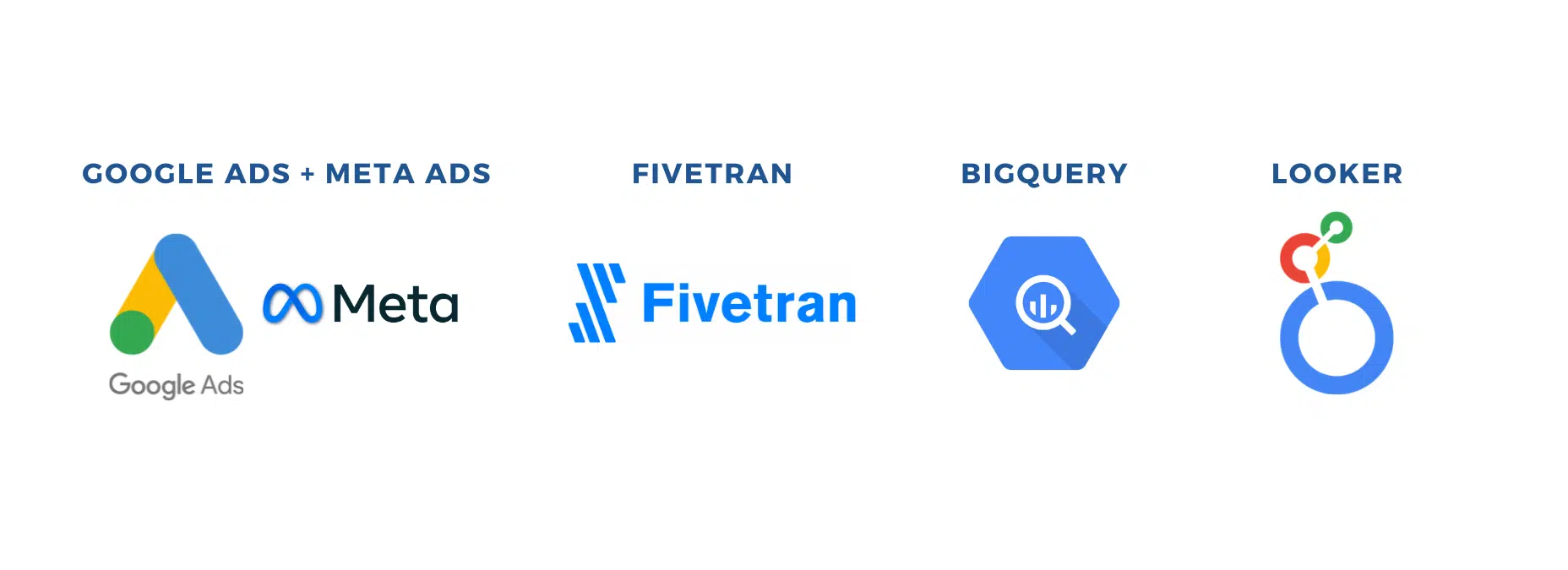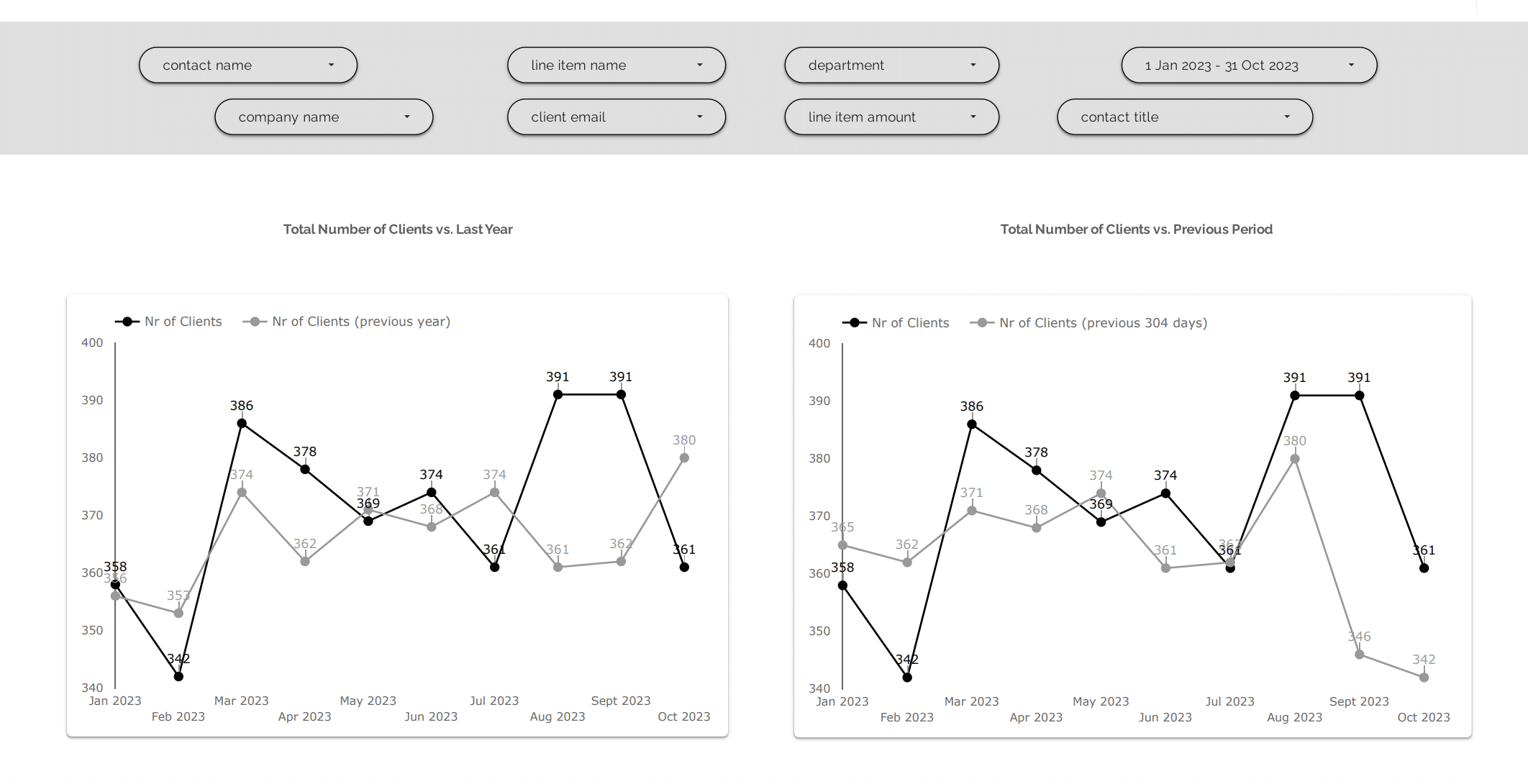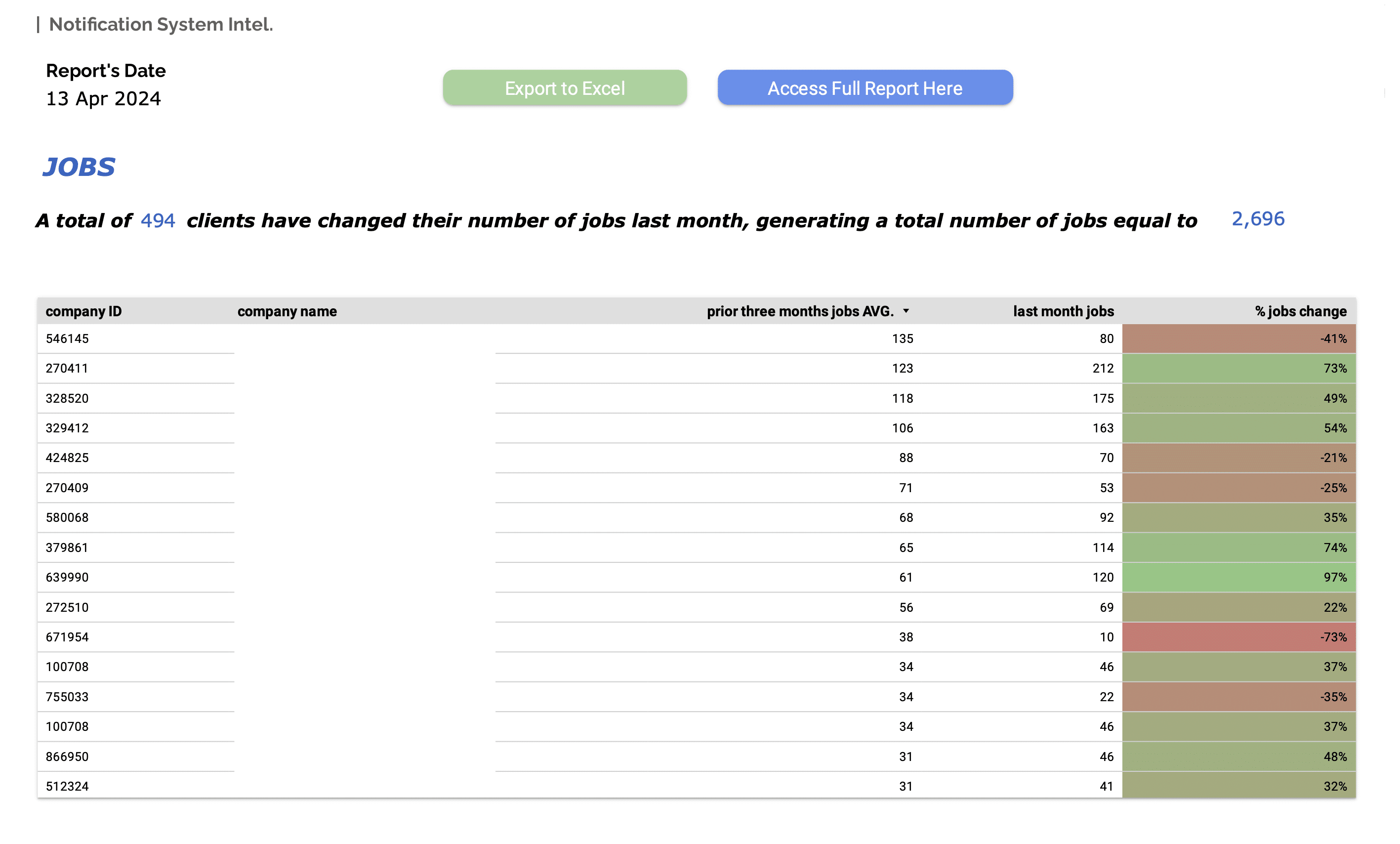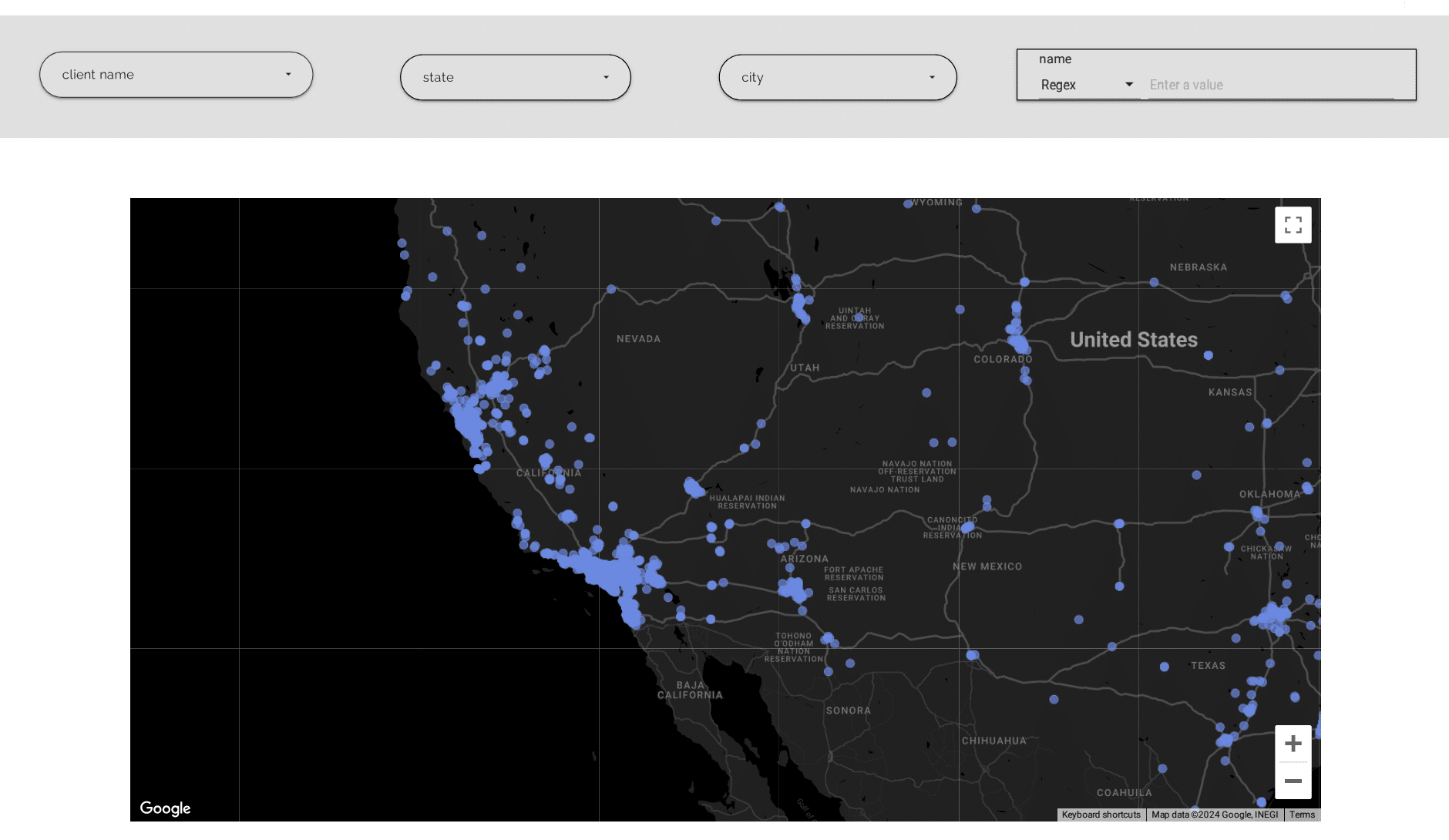
A well-known cyber law firm in the US was looking for a better system to understand and use the information in their database. They wanted to find new chances to help their clients more effectively. Their current database was good for putting in data and keeping records, but it wasn’t great at showing them the bigger picture, like trends and patterns in their work and sales numbers. We have then consulted them to set up a robust revenue analytics system.
The main objectives were:
The technologies used in this project were the following:
A database for storing entry data, equipped with an API for extracting data.
A cloud system for enhanced storage capabilities and automation features.
Tools for automating the daily transfer of data from one point to another.
A data warehouse used for storing and processing data.
A tool for data visualization, highlighting trends and patterns

The primary data source was ServeManager, a specialized software database designed for firms working in the court and legal industry.
We set up the data flow to connect with ServeManager using a REST API, managed through a custom-built Python script. We automated the script using GitHub for code management and Cloud Functions to trigger the script daily. The data was then saved in Google BigQuery, where we did further modeling to organize and clean the data for reporting. Finally, we connected the cleaned dataset to Looker for visualization.
The implementation of revenue analytics through our integration of advanced technologies from Google Cloud Platform and ServeManager’s robust database significantly transformed the law firm’s approach to data insight. Using BigQuery for deeper analysis allowed us to uncover vital patterns in revenue streams and job efficiency that were previously obscured by conventional data handling methods.
Looker’s role in visualizing revenue analytics was crucial in turning raw data into actionable insights. These visualizations included:



The new system significantly enhanced several aspects of the firm’s operations through focused applications of revenue analytics:
The impact of integrating a dedicated revenue analytics system was substantial:
By leveraging state-of-the-art technology to refine their data processes and insights, the law firm not only enhanced its operational capabilities but also reinforced its position as a forward-thinking leader in the legal industry, thanks to the strategic application of this automated revenue analytics system.
The setup time can vary based on the existing infrastructure and the specific needs of the organization. Typically, it ranges from a few weeks to a few months to fully integrate all components and ensure they function seamlessly together.
Security is a top priority. The system uses encrypted data storage and transfer protocols. Additionally, cloud platforms like Google Cloud Platform provide advanced security features that comply with industry standards to protect data integrity and confidentiality.
Costs can vary significantly based on the scale of deployment, chosen technologies, and specific customization needs. Expenses include software licensing fees, cloud storage and processing services, and consultancy fees for initial setup and ongoing maintenance. Ball park ranges are;
Initial Setup and Implementation: : $5,000 – $10,000
Monthly Ongoing Costs: $500- $2,000
Yes, the system is designed with flexibility in mind and can integrate with various other analytics and business intelligence tools. This allows organizations to leverage broader data insights and enhance their analytical capabilities.
Training requirements depend on the complexity of the system and the technical proficiency of the users. Typically, training sessions would cover how to use the database, understand dashboard metrics, use the notification system, and interpret data visualizations effectively.
The notification system is highly customizable. Alerts can be configured based on specific thresholds, types of data changes, or particular time frames. This customization ensures that different departments or users receive relevant and timely information.
The system is scalable to accommodate growing amounts of data and additional functionalities. Cloud-based solutions like Google Cloud Platform are particularly suited for scalability, allowing firms to increase storage and processing capabilities as needed.
Every data engineering system that we implement includes features for data cleansing and anomaly detection to ensure high data quality. Automated scripts and machine learning models can be implemented to identify and rectify data inaccuracies or outliers before they affect the analysis.
ENGINE’s team comprises experienced marketing analysts, data scientists, and engineers. We create world-class, customizable, custom-made customs for companies of all sizes. We only use trusted platforms such as; Fivetran, DBT, and Tableau for our data extraction, transformation, and visualization. Contact us to know more about out tech stack!
Our wide range of business intelligence dashboards is hugely dependent on machine learning technologies. This enables our solutions to provide accurate, up-to-date information.
Are you looking to centralize your data and create awesome kick-ass business dashboards to track performance?
Click the button to get in touch with out Team!